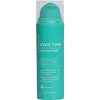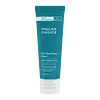What's inside
What's inside
 Key Ingredients
Key Ingredients

 Benefits
Benefits

 Concerns
Concerns

 Ingredients Side-by-side
Ingredients Side-by-side

Water
Skin ConditioningGlycerin
HumectantPolysorbate 60
EmulsifyingLactic Acid
BufferingGlycolic Acid
BufferingSodium Hydroxide
BufferingPvp
Emulsion StabilisingHydroxystearic/Linolenic/Oleic Polyglycerides
EmollientKojic Acid
AntioxidantNiacinamide
SmoothingHelianthus Annuus Seed Oil
EmollientHydroxyacetophenone
AntioxidantXanthan Gum
EmulsifyingCamellia Sinensis Leaf Extract
Antimicrobial1,2-Hexanediol
Skin ConditioningCaprylyl Glycol
EmollientRicinus Communis Seed Oil
MaskingSclerotium Gum
Emulsion StabilisingLecithin
EmollientPullulan
Ammonium Acryloyldimethyltaurate/Vp Copolymer
Citrus Aurantium Dulcis Peel Oil
MaskingCaprylic/Capric Triglyceride
MaskingGlycine Soja Oil
EmollientArctostaphylos Uva Ursi Leaf Extract
Skin ConditioningTocopherol
AntioxidantSodium Hyaluronate
HumectantCitrus Limon Juice
Skin ConditioningTetrahexyldecyl Ascorbate
AntioxidantRetinyl Palmitate
Skin ConditioningLactobacillus/Papaya Fruit Ferment Extract
AbrasiveBixa Orellana Seed Oil
EmollientCarica Papaya Seed Oil
HumectantAlpha-Arbutin
AntioxidantGlutathione
Azelaic Acid
BufferingMorus Alba Leaf Extract
Skin ConditioningOligopeptide-51
Skin ConditioningWater, Glycerin, Polysorbate 60, Lactic Acid, Glycolic Acid, Sodium Hydroxide, Pvp, Hydroxystearic/Linolenic/Oleic Polyglycerides, Kojic Acid, Niacinamide, Helianthus Annuus Seed Oil, Hydroxyacetophenone, Xanthan Gum, Camellia Sinensis Leaf Extract, 1,2-Hexanediol, Caprylyl Glycol, Ricinus Communis Seed Oil, Sclerotium Gum, Lecithin, Pullulan, Ammonium Acryloyldimethyltaurate/Vp Copolymer, Citrus Aurantium Dulcis Peel Oil, Caprylic/Capric Triglyceride, Glycine Soja Oil, Arctostaphylos Uva Ursi Leaf Extract, Tocopherol, Sodium Hyaluronate, Citrus Limon Juice, Tetrahexyldecyl Ascorbate, Retinyl Palmitate, Lactobacillus/Papaya Fruit Ferment Extract, Bixa Orellana Seed Oil, Carica Papaya Seed Oil, Alpha-Arbutin, Glutathione, Azelaic Acid, Morus Alba Leaf Extract, Oligopeptide-51
Water
Skin ConditioningKaolin
AbrasiveBentonite
AbsorbentGlycerin
HumectantSalix Alba Extract
Skin ConditioningStearic Acid
CleansingSteareth-2
EmulsifyingAloe Barbadensis Leaf Juice Powder
Skin ConditioningSea Whip Extract
Skin ConditioningColloidal Oatmeal
AbsorbentBisabolol
MaskingAscorbyl Palmitate
AntioxidantTocopheryl Acetate
AntioxidantPhospholipids
Skin ConditioningPanthenol
Skin ConditioningRetinyl Palmitate
Skin ConditioningCaprylyl Glycol
EmollientButylene Glycol
HumectantEthylhexylglycerin
Skin ConditioningHexylene Glycol
EmulsifyingDisodium EDTA
Phenoxyethanol
PreservativeWater, Kaolin, Bentonite, Glycerin, Salix Alba Extract, Stearic Acid, Steareth-2, Aloe Barbadensis Leaf Juice Powder, Sea Whip Extract, Colloidal Oatmeal, Bisabolol, Ascorbyl Palmitate, Tocopheryl Acetate, Phospholipids, Panthenol, Retinyl Palmitate, Caprylyl Glycol, Butylene Glycol, Ethylhexylglycerin, Hexylene Glycol, Disodium EDTA, Phenoxyethanol
 Reviews
Reviews

Alternatives
Ingredients Explained
These ingredients are found in both products.
Ingredients higher up in an ingredient list are typically present in a larger amount.
Caprylyl Glycol is a humectant and emollient, meaning it attracts and preserves moisture.
It is a common ingredient in many products, especially those designed to hydrate skin. The primary benefits are retaining moisture, skin softening, and promoting a healthy skin barrier.
Though Caprylyl Glycol is an alcohol derived from fatty acids, it is not the kind that can dry out skin.
This ingredient is also used as a preservative to extend the life of products. It has slight antimicrobial properties.
Learn more about Caprylyl GlycolGlycerin is already naturally found in your skin. It helps moisturize and protect your skin.
A study from 2016 found glycerin to be more effective as a humectant than AHAs and hyaluronic acid.
As a humectant, it helps the skin stay hydrated by pulling moisture to your skin. The low molecular weight of glycerin allows it to pull moisture into the deeper layers of your skin.
Hydrated skin improves your skin barrier; Your skin barrier helps protect against irritants and bacteria.
Glycerin has also been found to have antimicrobial and antiviral properties. Due to these properties, glycerin is often used in wound and burn treatments.
In cosmetics, glycerin is usually derived from plants such as soybean or palm. However, it can also be sourced from animals, such as tallow or animal fat.
This ingredient is organic, colorless, odorless, and non-toxic.
Glycerin is the name for this ingredient in American English. British English uses Glycerol/Glycerine.
Learn more about GlycerinRetinyl palmitate is a form of retinoid. Retinoids are the superstar class of anti-aging ingredients that include tretinoin and retinol.
This particular ingredient has had a bumpy year with its rise and fall in popularity.
First, Retinyl palmitate is created from palmitic acid and retinol. It is a retinol ester and considered one of the weaker forms of retinoid.
This is because all retinoids have to be converted to Tretinoin, AKA retinoic acid. Retinyl Palmitate is pretty far down the line and has to go through multiple conversions before its effects are seen.
Due to this long and ineffective conversion line, the benefits of Retinyl Palmitate are debated.
Studies show Retinyl Palmitate to help:
Dermatologists say this ingredient is ineffective because it isn't used in high enough concentrations in cosmetics.
This ingredient used to be found in sunscreens to boost the efficacy of sunscreen filters.
The downfall of Retinyl Palmitate was due to released reports about the ingredient being correlated to sun damage and skin tumors.
While there is a study showing this ingredient to cause DNA damage when exposed to UV-A, there is no concrete proof of it being linked to skin cancer. It is safe to use when used correctly.
All retinoids increase your skin's sensitivity to the sun in the first few months of usage. Be especially careful with reapplying sunscreen when using any form of retinoid.
Currently, this ingredient is still allowed in cosmetics all over the world. In Canada, cosmetics must have a warning label stating the product to contain Retinyl Palmitate
Fun fact: This ingredient is often added to low-fat milk to increase the levels of Vitamin A.
Learn more about Retinyl PalmitateWater. It's the most common cosmetic ingredient of all. You'll usually see it at the top of ingredient lists, meaning that it makes up the largest part of the product.
So why is it so popular? Water most often acts as a solvent - this means that it helps dissolve other ingredients into the formulation.
You'll also recognize water as that liquid we all need to stay alive. If you see this, drink a glass of water. Stay hydrated!
Learn more about Water